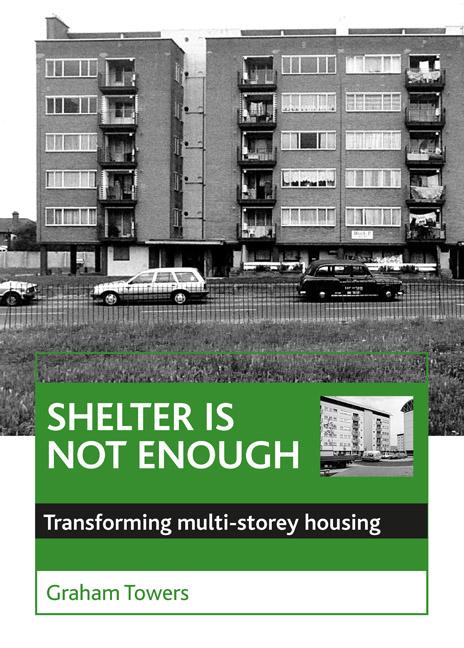Book contents
- Frontmatter
- Contents
- List of figures and tables
- Dedication
- Preface
- Foreword
- one Introduction
- two Forming the multi-storey legacy
- three Politics, economics and housing form
- four Social stigma and community action
- five Redeeming the estates
- six Facets of regeneration
- seven Building a model framework
- eight Prospects for transformation
- nine Ending the estate syndrome
- ten On broader horizons ...
- Bibliography
- Appendix: Case study research
- Index
Appendix: Case study research
Published online by Cambridge University Press: 05 July 2022
- Frontmatter
- Contents
- List of figures and tables
- Dedication
- Preface
- Foreword
- one Introduction
- two Forming the multi-storey legacy
- three Politics, economics and housing form
- four Social stigma and community action
- five Redeeming the estates
- six Facets of regeneration
- seven Building a model framework
- eight Prospects for transformation
- nine Ending the estate syndrome
- ten On broader horizons ...
- Bibliography
- Appendix: Case study research
- Index
Summary
Rationale and methodology
Five case studies were carried out with the primary purpose of testing the value of the model framework developed from practice and described in Chapter Seven. It is generally accepted that there is no right or wrong way to carry out case studies. The aims of studies, their nature, the numbers involved and their size can vary considerably. For any particular piece of research a rationale and methodology needs to be developed to suit the specific purposes of the project. In order to provide an appropriate test for the model of regeneration, three areas needed to be defined: the criteria for the selection of the studies; the method of collecting the information; and a strategy for analysing the results.
In selecting the estates for study it was essential that they should have experienced serious social problems and, to a degree, technical problems as well. It was a priority to make the selected estates comparable. Criteria were established to ensure that many features were common to all the estates so that differences in the effectiveness of improvements were as clearly marked as possible. Within these criteria it might have been appropriate to select studies which illustrated the full range of types of multi-storey housing – a ‘representative sample’. However, it had become clear from practice and research that certain types of housing block readily lend themselves to remodelling. It therefore seemed appropriate that a ‘focused sampling’ approach should be applied – that is, the selective study of examples which were expected to prove especially illuminating (Hakim, 1990, p 141). It was decided that the focus should be on the types of estate that provide the greatest area of uncertainty in regeneration.
In collecting information it was decided that evaluation of the case studies would not be served by the analysis of statistical data or surveys of residents’ opinions. Both these approaches are established in social science and are appropriate for certain types of research. To test the model of regeneration, what was needed was as accurate a picture as possible of the improvement process on each estate and its effects. This picture should reveal the problems of the estate; the way in which the improvement project was developed; the influence of the various participants; the details of the scheme; its impact on the problems; and an assessment of its durability and effect over time.
- Type
- Chapter
- Information
- Shelter Is Not EnoughTransforming Multi-Storey Housing, pp. 237 - 250Publisher: Bristol University PressPrint publication year: 2000



